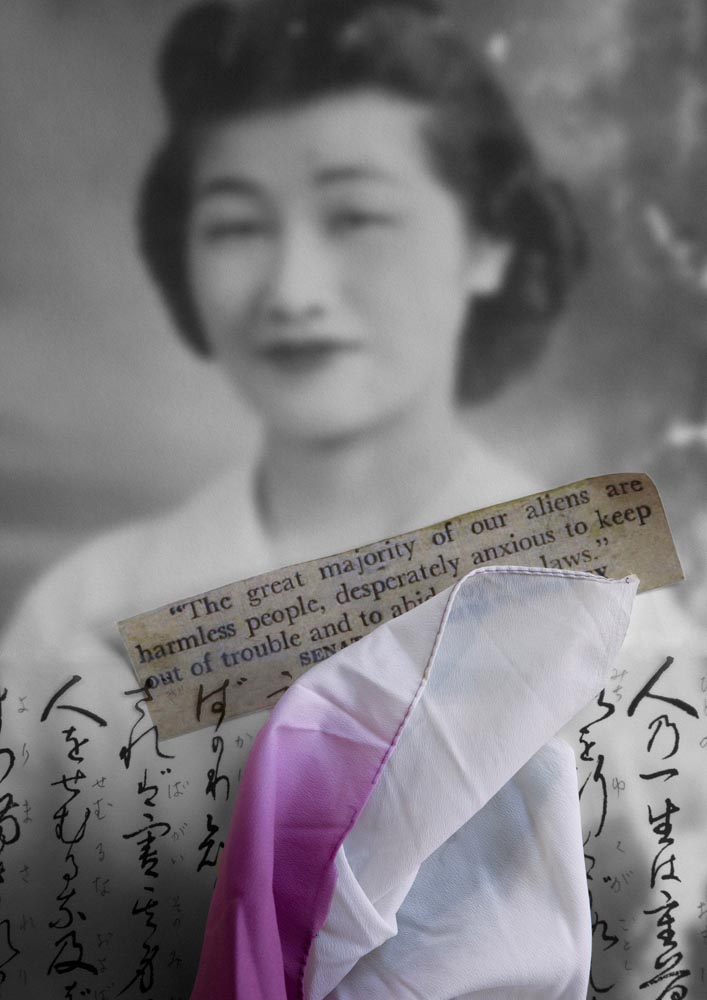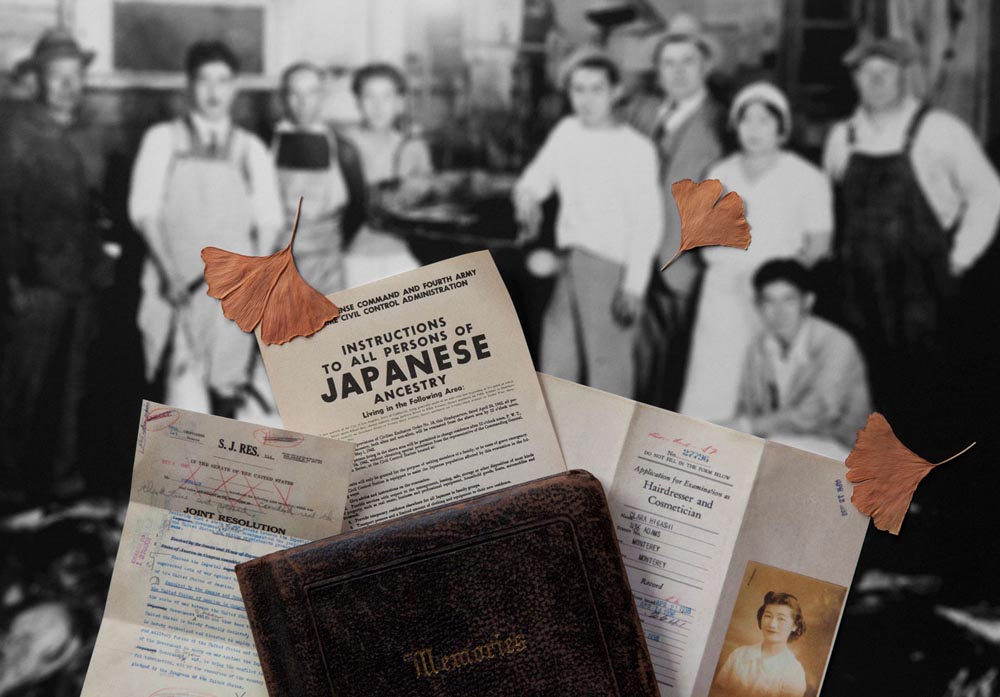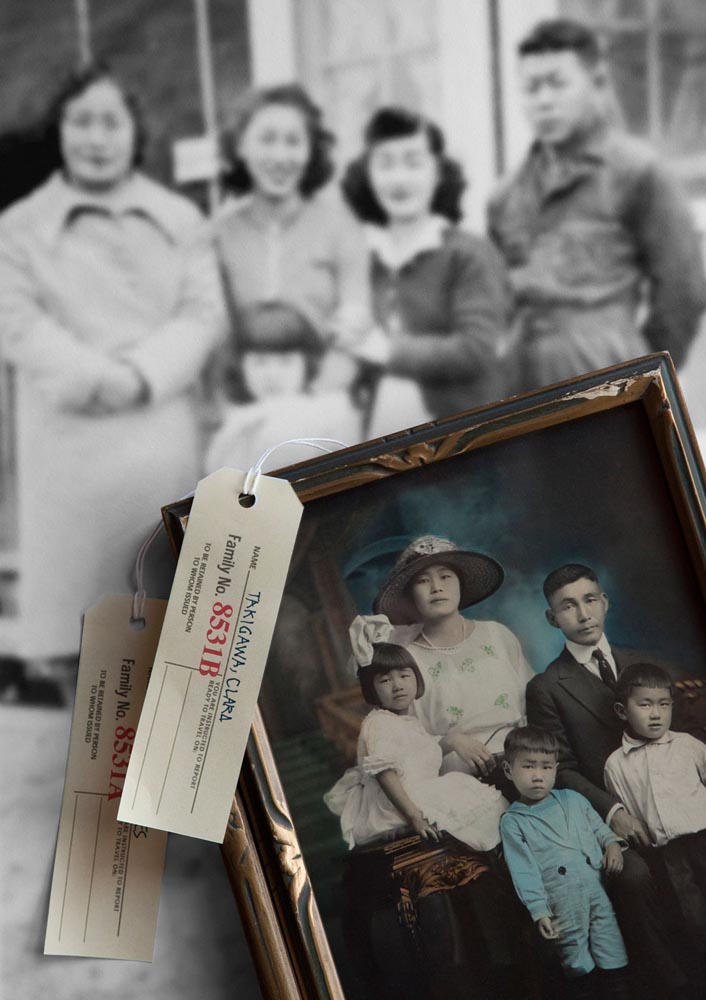












I am compelled to tell this story for two reasons—one personal, one political. This work has illuminated the origin of my paradoxical worldview. Balancing Cultures is a family history project that bears witness to the tolerance and subsequent acceptance of a paradoxical dilemma. These images serve as a reminder of the injustices that can result from hysteria, racism, and economic exploitation. And they give voice to my long-silenced family story.
In 1942, Executive Order 9066 caused untold distress to all Japanese Americans on the west coast. My family experienced the humiliation of property loss, incarceration, and the challenge of re-integrating into American society after release from the WWII concentration camps—all without due process. How could they forgive such a travesty of justice? The Japanese have a saying for this—shikata ga nai—it cannot be helped. But it was gaman, or perseverance, understood by most post-war Japanese American families as “staying silent,” that distinguished the tolerance of their losses.
Making these images, I feel my family’s shame and anger. As a third generation Japanese American, I was spared bitterness by the gift of my family’s silence. Harmony and acceptance do not simply befall us. These characteristics come into being through the very act of seeking them. Susan Sontag said, “Polarities limit and imprison us.” We must consider that the divisive polarities we see today are caused by an inability to live with paradox.